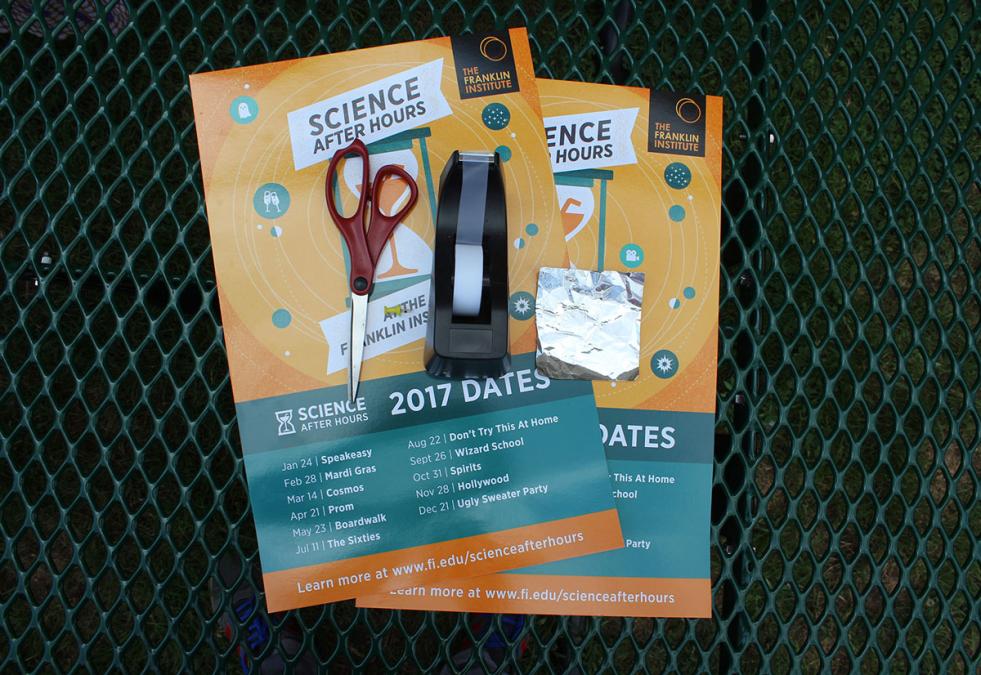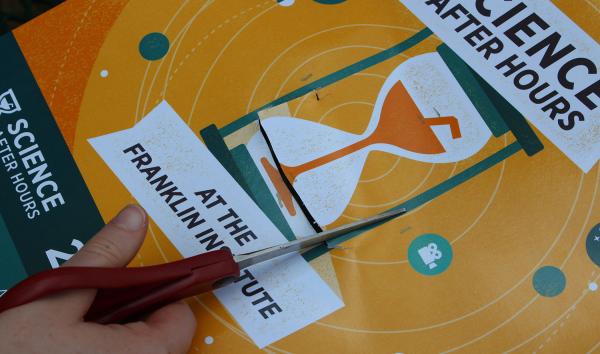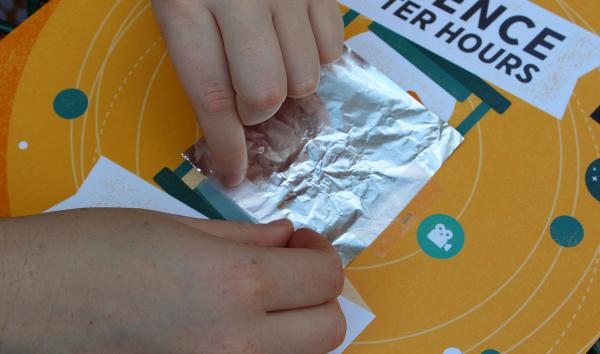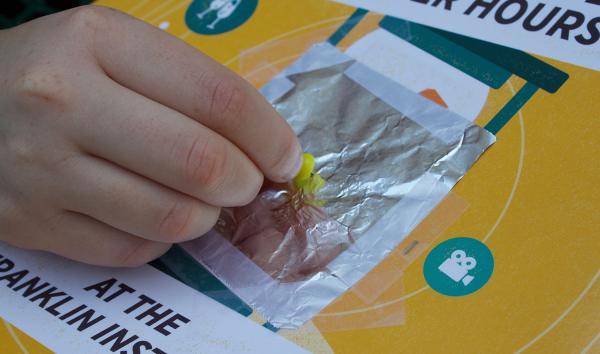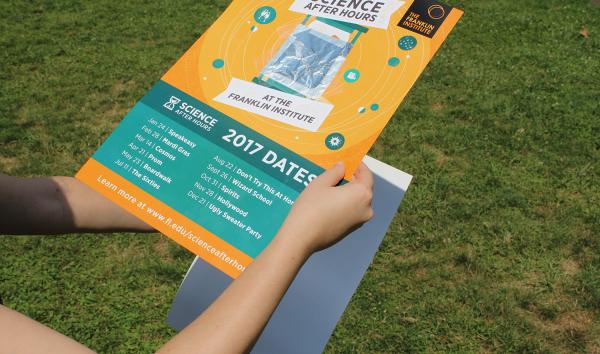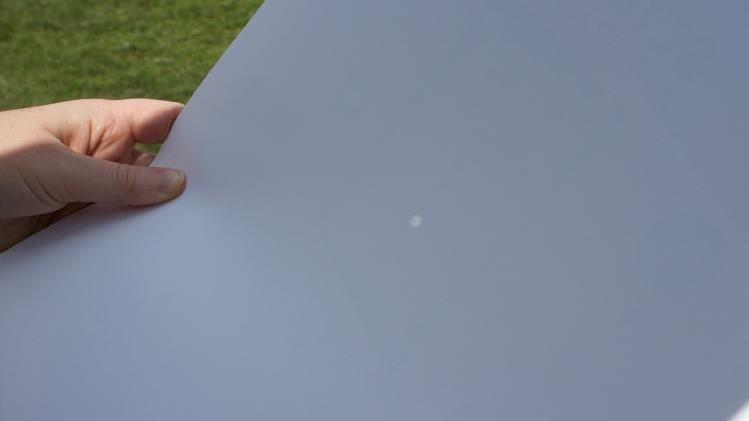Whether you are hoping to view a Solar Eclipse or just generally want to observe the Sun, you don't necessarily need specialized equipment to do so. These instructions will help you, using materials found in a typical home, to make a "Pinhole Camera" viewing device that will allow for easy, inexpensive, and safe solar observing.
Follow along with us as we reuse old materials we had around the museum to build our own pinhole camera!
Materials
- 2 Pieces of Heavy Paper
- 1 Small Piece of Aluminum Foil (Approximately 3" x 3" square)
- Scissors
- Tape
- Push Pin or Paper Clip
How to Make Your Own Pinhole Camera
Step 1: Cut a hole in one of the pieces of paper
Using the scissors, cut a small hole into the center of one of your pieces of heavy paper. This hole should be slightly smaller than your piece of aluminum foil.
Step 2: Tape the foil over the hole
Using your tape (most kinds of tape are fine), affix your small piece of aluminum foil to the heavy paper. Make sure the foil is secured all the way around the hole.
Step 3: Poke a small hole into the aluminum foil
Using the push pin, paper clip or anything capable of poking a small precise hole, make a puncture in the foil. This hole is the "pinhole" of the viewing device.
Step 4: Try it out
With your back to the Sun, hold the piece of heavy paper to which you added the aluminum foil in front of the other piece of paper until a small circular image can be seen on the second piece of paper.
Observe the Sun!
When you have properly lined up the pieces of paper with the Sun, you will see a small image appear on the paper, this image is showing the sun itself. If you see dark spots on your image of the sun, you may be looking at some sizable sunspots. Remember, this method of safely viewing the Sun won't work if the sun is blocked by clouds or if it is nighttime.
A Note About Eye Safety
Any small part of the sun is just as bright as the entire sun and should never be observed directly without proper eye protection. Protecting your eyes is the most important precaution of eclipse viewing. However, during totality when the sun is completely covered by the moon, the event can be observed without eye protection but only during totality when the sun is completely covered by the moon. Extreme caution must be used during this time because as we observe the spectacular view, we forget the moon is still moving and our eyes could be exposed to the sun’s bright disk while observing without eye protection. Set an alarm on your smartphone or watch to alert you to stop viewing directly 30 seconds BEFORE totality ends AT YOUR LOCATION!


